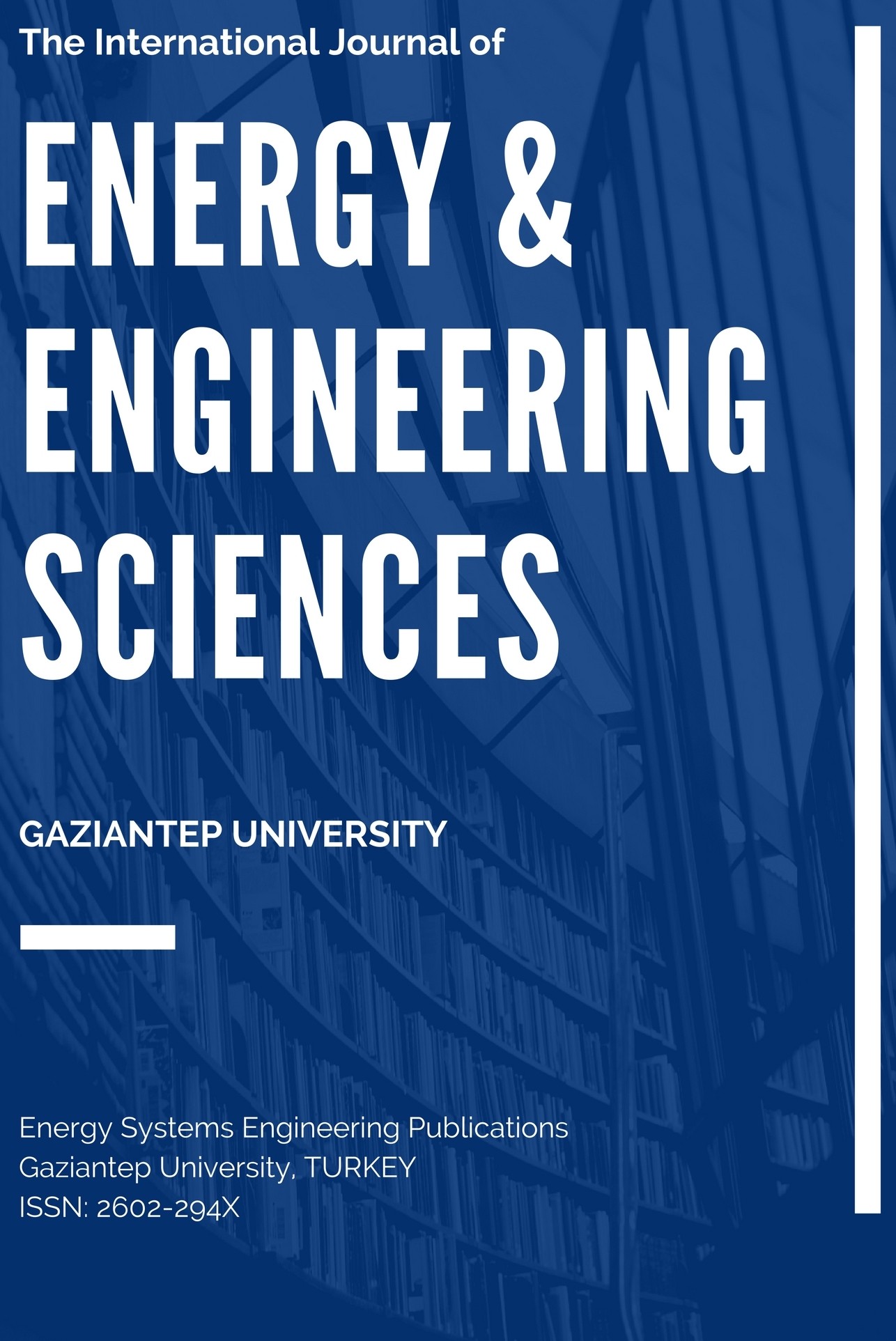INVESTIGATION OF GREENHOUSE GAS EMISSIONS FROM DISSOLVED AIR FLOTATION PROCESS
INVESTIGATION OF GREENHOUSE GAS EMISSIONS FROM DISSOLVED AIR FLOTATION PROCESS
greenhouse gas, wastewater treatment plant, dissolved air flotation, direct emission indirect emission.,
___
- [1] IPCC. Climate Change 2014 Mitigation of Climate Change, Cambridge University Press, Cambridge, England, 2014.
- [2] Kyung, D., Kim, M., Chang, J. & Lee, W. (2015). Estimation of greenhouse gas emissions from a hybrid wastewater treatment plant. Journal of Cleaner Production, 95,117–123.
- [3] Corominas, L., Flores-Alsına, X., Snip, L. & Vanrolleghem, P.A. (2012). Comparison of different modeling approaches to better evaluate greenhouse gas emissions from whole wastewater treatment plants. Biotechnology and Bioengineering, 109(11), 2854–2863.
- [4] Yapıcıoğlu, P. (2018). Greenhouse Gases Emissions Minimization of Wastewater Treatment, MSc thesis, Harran University Graduate School of Natural and Applied Sciences Department of Environmental Engineering, 96pp.
- [5] Metcalf & Eddy, (2014). Wastewater Engineering: Treatment and Resource Recovery 5th ed, Boston, USA, McGraw-Hill.
- [6] Parravicini, V., Svardal, K. and Krampe, J. (2016). Greenhouse gas emissions from wastewater treatment plants. Energy Procedia, 97, 246–253.
- [7] Yapıcıoğlu, P., & Filibeli, A. (2017). Proceedings from IATS '17: The 8th International Advanced Technologies Symposiu. Elazığ, Turkey.
- [8] Falletti, L., Conte, L., Zaggia, A., Battistini, T. & Garosi, D. (2014). Food industry wastewater treatment plant based on flotation and MBBR. Modern Environment Science and Engineering, 1, 562-566.
- [9] Pereira, M.S., Borges, A.C., Heleno, F.F., Squillace, L.F.A. & Faroni, L.R.D. (2018). Treatment of synthetic milk industry wastewater using batch dissolved air flotation. Journal of Cleaner Production, 189, 729-737.
- [10] Castillo, A., Vall, P., Garrido-Baserba, M., Comas, J. & Poch, M. (2017). Selection of industrial (food, drink and milk sector) wastewater treatment technologies: a multi-criteria assessment. Journal of Cleaner Production, 143, 180-190.
- [11] Behin, J. & Bahrami, S. (2012). Modeling an industrial dissolved air flotation tank used for separating oil from wastewater. Chemical Engineering and Processing, 59, 1– 8.
- [12] Edzwald, J.K. (2010). Dissolved air flotation and me. Water Research, 44, 2077-2106.
- [13] American Public Health Association, American Water Works Association, (1999). Standard Methods for the Examination of Water and Wastewater, USA.
- [14] IEA, 2016. World Energy Statistics 2016. Key world energy statistics http://www.iea.org/statistics/topics/energybalances/.
- [15] Ashrafi, O., Yerushalmi, L. & Haghighat, F. (2013). Application of dynamic models to estimate greenhouse gas emission by wastewater treatment plants of the pulp and paper industry. Environmental Science and Pollution Research, 20(3), 1858–1869.
- [16] Yerushalmi, L., Ashrafi, O. & Haghighat, F. (2013). Reductions in greenhouse gas (GHG) generation and energy consumption in wastewater treatment plants. Water Science and Technology, 67( 5), 1159–1164.
- [17] Masuda, S., Suzuki, S., Sano, I., Li, Y.Y., Nishimura, O. (2015). The seasonal variation of emission of greenhouse gases from a full-scale sewage treatment plant. Chemosphere, 140, 167-173.
- [18] Rodriguez-Caballero, A., Aymerich, I,, Poch, M., Pijuan, M. (2014). Evaluation of process conditions triggering emissions of green-house gases from a biological wastewater treatment system. Science of The Total Environment, 493, 384-391.
- [19] Shahabadi, M.B., Yerushalmi, L., Haghighat, F. (2009). Impact of process design on greenhouse gas (GHG) generation by wastewater treatment plants. Water Research, 43(10), 2679-2687.
- ISSN: 2602-294X
- Yayın Aralığı: Yılda 2 Sayı
- Başlangıç: 2016
- Yayıncı: Gaziantep Üniversitesi
DESIGN AND MODELLING OF INTERNAL PERMANENT MAGNET MOTOR
Muhammed ASLAN, Ali Baran ÖZPOLAT, Cengiz İŞÇİ, Fatih EROĞLU, Ahmet Mete VURAL
COMPARISON OF DYNAMIC PERFORMANCES OF STATCOM, SSSC, IPFC AND UPFC ON INTER-AREA OSCILLATION DAMPING
Saıf Taher FADHIL, Mohammed HAMAD, Ali Osman ARSLAN, Ahmet Mete VURAL
EFFECT OF ALKALINE CONCENTRATION ON THE HYDROGEN GENERATION
AERODYNAMIC OPTIMIZATION OF NACA 0012 AIRFOIL
İbrahim GÖV, Mehmet Hanifi DOĞRU
RESERVOIR-TARGETED OIL AND GAS EXPLORATION IN THE KARABURUN PENINSULA (WESTERN TURKEY)
Adil ÖZDEMİR, Atilla KARATAŞ, Yildiray PALABIYIK, Alperen ŞAHİNOĞLU
AERODYNAMIC ANALYSES OF NACA 63-215
Ümit KORKMAZ, İbrahim GÖV, Mehmet Hanifi DOĞRU
Aniekan IKPE, Akanu-ıbiam NDON, Promise ETİM
INVESTIGATION OF GREENHOUSE GAS EMISSIONS FROM DISSOLVED AIR FLOTATION PROCESS
